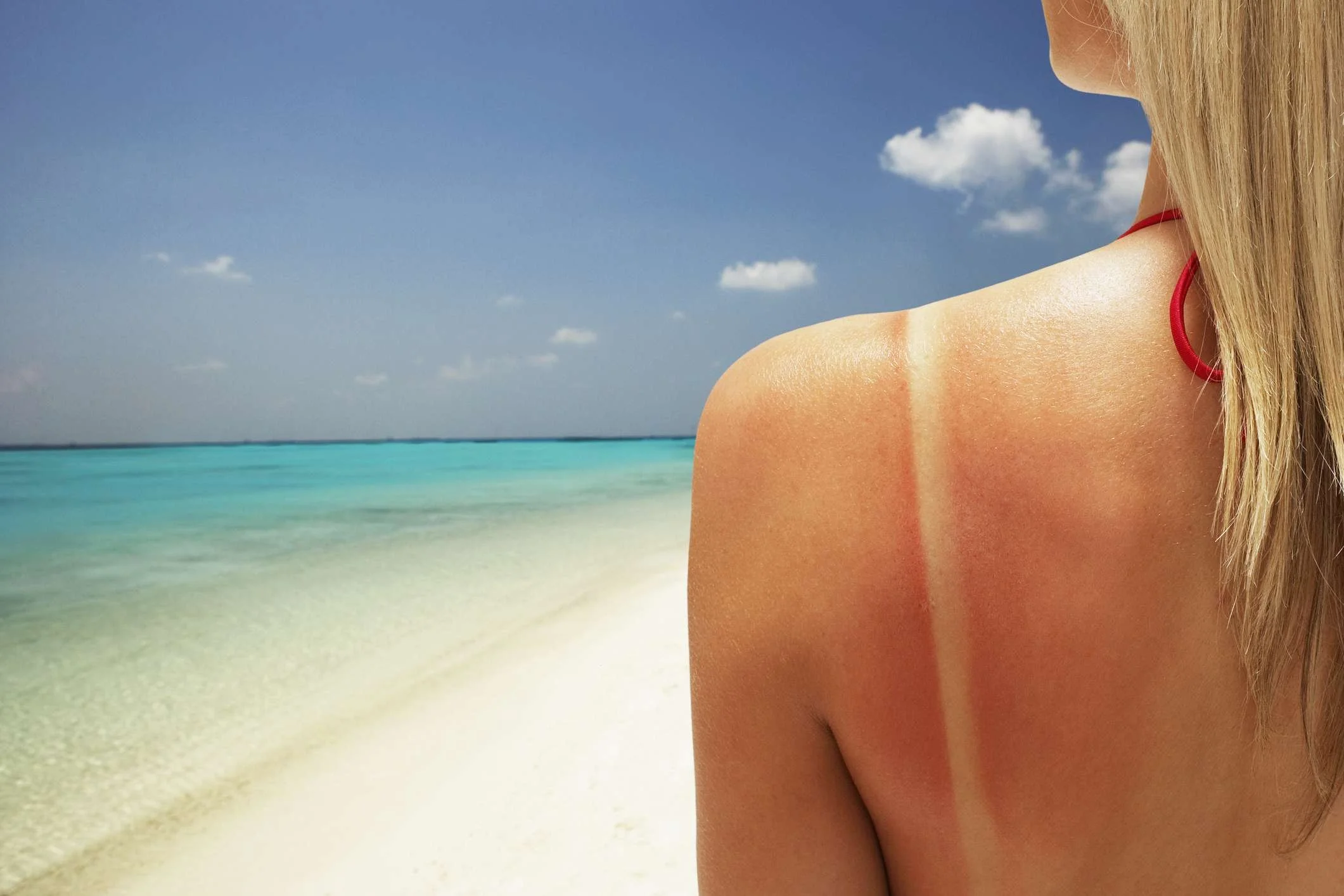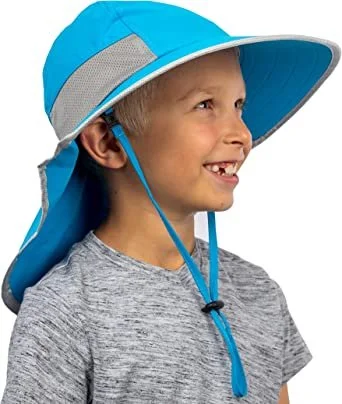Sun Kissed
We may have come through the hottest part of the year but the sun can still be very damaging. Sadly, due to the climate crisis, we will need to be more and more vigilant to protect our skin from the sun, even in Ireland! In this blog I will refer to my own experience of melasma as well as refer to information from uptodate.com about how best to protect yourself from the sun, on sunny AND cloudy days, in summer AND in winter.
I have my own personal experience of experiencing Melasma. Melasma occurs because melanin, the normal pigment found in the deeper level of the skin (the epidermis), travels to the top layer of the skin, known as the Dermis. If a skin biopsy is taken it will show that melanin is present in the top dermal layer. It is not clear why this happens, but hormones from the pituitary gland can stimulate the process in certain conditions, pregnancy being one of them.
You can see the patchy, dark discolouration on the cheek. In this case it came on during a second pregnancy while in a hot country where UV radiation is higher. Wearing sunblock during pregnancy, even in colder less sunny climes, is a useful strategy to prevent this; you never know if you will be affected.
PROTECT YOUR SKIN
There are a number of effective ways to prevent sunburn, including staying out of the sun during peak hours, sunscreen, and protective clothing, especially a sun hat.
While these measures are important for everyone, they are especially important for children and people with fair skin, who burn easily and tan poorly.
AVOID SUN EXPOSURE
It is important to prepare, especially if you plan to be out in the sun for an extended period of time or during the middle of the day, when the sun's rays are strongest.
Even on cloudy days, it is important to protect your skin because ultraviolet (UV) radiation can pass through the clouds and cause sunburn. In addition, UV rays reflect off surfaces like sand, snow, and cement. Using two types of protection (shade or clothing plus sunscreen) is the best way to reduce sun exposure and the risk of sunburn and skin cancer.
In winter it is important to note that snow can have up to 30 percent reflectance and cause severe sunburn without protection.
While swimming it is important to note that the sun's rays can also penetrate clear water.
Seek shade — Areas that are shaded receive less UV radiation, and can reduce your chances of developing a sunburn. Trees, an umbrella, or a structure (eg, a porch or tent) can provide shade.
DID YOU KNOW THAT Sunscreen is still recommended while sitting in the shade because your skin is exposed to some UV rays, particularly through reflection off other surfaces.
SUNCREAM
The active ingredients of sunscreens can be minerals (eg, titanium oxide or zinc oxide) that provide a physical barrier to ultraviolet (UV) radiation, or organic chemicals that absorb UV rays. Sunscreen formulations (gels, lotions, and sprays) typically contain several active ingredients and, often, a mix of physical and chemical agents.
The sun protection factor (SPF) is primarily an indicator of how much protection the sunscreen offers against ultraviolet B (UVB; sunburn) rays. You should look for a sunscreen that is labeled as broad-spectrum, meaning it protects against both ultraviolet A (UVA) and UVB rays. However, most people do not apply enough sunscreen to achieve the SPF on the label and can overestimate their level of protection. Applying the sunscreen twice is a good way to achieve better protection.
●Use a sunscreen with an SPF of 50 on exposed skin, as studies show you get 20 percent more protection from SPF 50 sunscreen compared with SPF 30 sunscreen. However, if a lower SPF (eg, SPF 30) is better tolerated on the skin, then that is better than not using a sunscreen at all.
●Use a sunscreen that protects against both UVA and UVB radiation (broad-spectrum sunscreen).
●You should not use a high SPF just to stay out longer in the sunshine. If you anticipate intense and/or prolonged sun exposure (eg, while at the beach or skiing), you should use a high SPF sunscreen and reapply it frequently.
How much sunscreen do I need? — You should apply sunscreen generously to all exposed skin 20 minutes before exposure. Exposed skin is any skin that is not protected from the sun.
Good application is needed to achieve the labeled SPF. One approach is the "teaspoon rule," which means a generous teaspoon of sunscreen to each leg, the front and back torso, and a generous half-teaspoon to each arm, face, and neck. Applying less than this amount may reduce the sunscreen's SPF rating.
You should reapply sunscreen after sweating, rubbing the skin, drying off with a towel, or swimming. The traditional advice is to reapply sunscreen every two to three hours. However, some evidence suggests that reapplying sunscreen as soon as 20 minutes after going outside may offer greater protection, allowing you to completely cover areas that you might have missed when you first applied sunscreen. You should then reapply every two to three hours.
Protect your lips with lip balm containing a SPF of 30 or higher and reapply frequently. Some cosmetic products (eg, liquid foundation, lipstick) and moisturizers contain sun-protective ingredients, although to be truly effective, these products should be labeled as having an SPF of 15 or higher. Many of these products provide little or no UVA protection.
Sunscreen and vitamin D — Although UV radiation has many deleterious consequences, wavelengths within the UVB spectrum have the beneficial effect of triggering the production of vitamin D by the skin. This is the main source of vitamin D, which is essential for good bone health. Some studies have shown that although sunscreens protect against UVB, they still allow very good vitamin D synthesis because the UVB dose for this is much lower than the dose for sunburn. Thus, the benefit of sunscreen use against sunburn and skin cancer is not compromised by any significant effects on vitamin D production.
CLOTHING
In addition to sunscreen, consider covering exposed skin with a wide-brimmed hat, long-sleeved shirt, and long trousers.
Sunglasses that provide 100 percent UV ray protection can reduce your risk of cataracts (clouding in the eye's lens); wraparound glasses provide the most complete protection.
Clothing made from tightly woven, dark fabric tends to provide greater protection than light-colored fabrics, although they may feel more uncomfortable as they absorb more UV, which gets converted to heat.
Tips for children
Children are at higher risk than adults for becoming sunburned for several reasons. Children are usually unaware of the risks of sunburn and are less likely to use preventive measures (eg, sunscreen, shade). Children may also be more sensitive to the sun, resulting in more DNA damage in response to the same amount of sunshine as adults. Thus, regular sunscreen application is imperative for children. Baby formulas are recommended, as these are more likely to contain physical blockers (eg, titanium dioxide or zinc oxide) that are thought to be safer.
Babies under six months should be kept out of direct sunlight, and sunscreen can be applied to any exposed areas of the skin (eg, face and back of hands). The safety of sunscreen has not been tested in infants younger than six months; thus, parents are encouraged to use hats, sunglasses, and shade to protect children from the sun.
REFERENCE:
https://www.uptodate.com/contents/sunburn-prevention-beyond-the-basics









